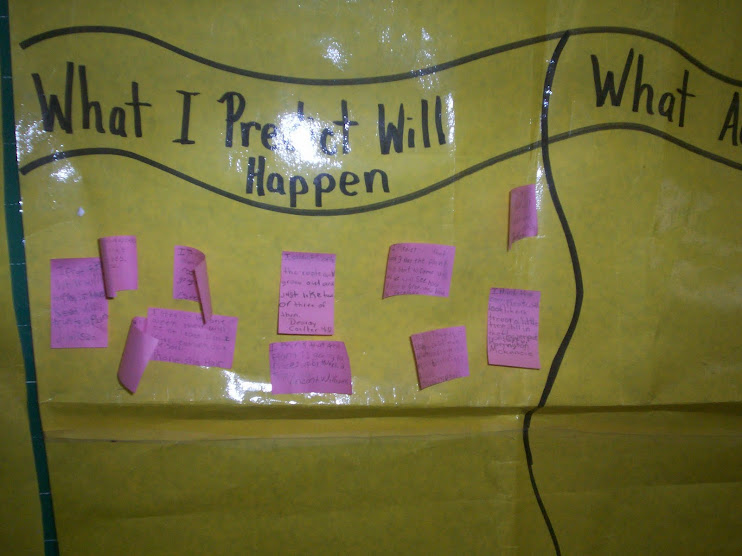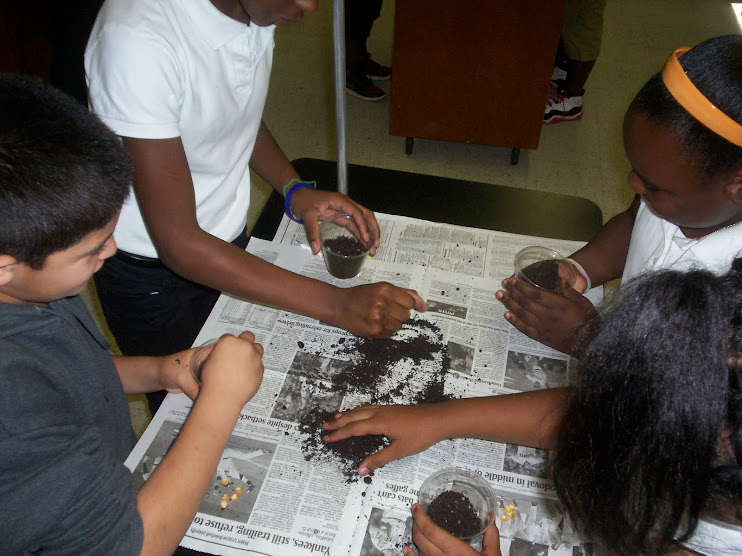Tessie Sanders
Cas study-LTC 5336
April 2, 2010
Abstract
Those who seem to accept students conditionally – requiring them to act in a particular way in order to be valued, or even in ordered to be allowed to stay – often see themselves as trying to reinforce or eliminate specific student behaviors. What they often don’t see is that traditional classroom management techniques, along with the narrow emphasis on observable behaviors that underlies those techniques, make it very difficult to attend to the person who engages in those behaviors…When our primary focus is on discrete behaviors; we end up ignoring the whole child.
“Punishments and rewards are two sides of the same coin and that coin doesn’t buy you much.”
-Alfie Kohn-
Unconditional Teaching
www.alfiekohn.org/teaching/uncondtchg.htm
Preliminary pilot activities that will stabilize the expected outcome for most Common and Teacher Made assessments are the following:
Discovery Learning
1. Develops curiosity
2. Develops skills in retrieval of information
3. Develops decision making skills
4. Increases awareness of relationships between concepts
5. Increases a child’s active participation
6. Holds interest
7. Increases reasoning power
8. Links new learning to old
2 Styles of Reading Instruction
Other activities that would be useful in this type of case study would be Toss the Ball and Delving. In reflecting upon two presentation skills, or teaching styles for ESL Reading instruction, and assessment that have proven effective are, Toss the Ball, and Delving. In Toss the Ball, the Teacher tosses a softball, or object around the room. When the student catches the object, he/she must answer. The benefits of this teaching style is that students stay on their toes, and they know to be ready to answer if the ball comes in their direction. Delving can be an important part of any teaching technique because it allows the teacher the opportunity to assess, and monitor many things. Delving is a way of testing the students’ higher order thinking skills by using Bloom’s Taxonomy questioning of taught material. This strategy is used when the student does not know the answer, and you want them to retain acquired (learned) information. Research shows that many Teachers do not use delving with all students to elicit responses. This is important, because if the student does not know the answer at all, then this technique helps the Teacher determine what part of a lesson needs to be re-taught.
The benefits of these two teaching styles , among many, are that they elicit answers from students, higher-level questioning goes beyond having the students recall capability, word prompts and question starters are used to begin asking higher-level questioning, and most importantly, it incorporates the use of test formatted questions that are used on high stakes tests. The below link provides a technical resource for assessing ESL students.
www.kidsource.com/kidsource/content2/practical.assessment.4.html
skip to main |
skip to sidebar


Wonderings began forming regarding rocky biome and seed germination.

Students begin to plant seedling in soil, sand, gravel, and pond water.

After read-aloud, students cast their plant growing predictions.

4th Grade students make predictions as to what they think will happen during the palnt cycle after reading "One Bean" by Anne Rockwell.

7th Grade Dallas ISD student has 4th Graders aid her investigation on plant growth in various conditions.

Dallas Educator, Ms. Lewis proudly sports her students efforts in creating projects about the different activities and places to visit in Mexico in honor of Cinco de Mayo.

5th Grade Bilingual students combine Reading and Math skills to construct bar graphs to depict researched information.

Line graph of female ESL student's improvements after repetitious phonemic lessons in Reading/Language Arts.

Bar graphs and line graphs depict evidence of students' growth during ESL Case Study after consistancy of differentiated, and phonemic awareness small group lessons.



After read-aloud, students conduct their own potting experience.


One student identifies the objective of Sequence from beginning, middle, to end.

Students in Plant Growth control group read One Bean by Anne Rockwell to build anticipation toward project.

Students in DallasISD celebrate Cinco De Mayo with class, style, and a smile.



Students gain knowledge of Science vocabulary word, "paleontologist." They look for shark teeth in hardend rock.


Case study groups use Bloom's Higher Order Thinking skills at the Environmental Research Center in Seagoville, TX. It is important to use all levels of students' modalities in order to increase a lesson's concepts.

Working with students in small groups during case study increased vocabulary concepts through building phonemic base. Here, students work on refining locating the right answer when reading. Apr. 2010


Students in Group D of case study brainstorm in pairs ways they can build a sentence using an interactive Literacy Chart. They must tell Who, Did What, When, and Where using Adj. that describe and Adv. that tell how.

Bravo! ESL student's confidence rises as she finally masters pulling out supporitng facts and writing them down. Three weeks ago, she was afraid to show her knowledge. Mar. 2010

ESL and Gen. Ed. students of case study use a bubble map to record facts & details that aid in memory retention of complex information. 3/11/10

ESL case study student practices Super Sentence Building by constructing a detailed paragraph. Feb.2010

Children's Books

Welcome to my weblog. I am excited about being a Teacher who uses interactive educational websites in the classroom, and in my personal business. Let this site serve as your resource for finding innovative ways in educating today's youth in this technological age.
Let the Experiment Begin!


Wonderings began forming regarding rocky biome and seed germination.

Students begin to plant seedling in soil, sand, gravel, and pond water.
7th Grade Dallas ISD Student's plant invetsigation peeks 4th Graders' interest!

After read-aloud, students cast their plant growing predictions.

4th Grade students make predictions as to what they think will happen during the palnt cycle after reading "One Bean" by Anne Rockwell.
Biomes: Can A Plant Germinate In Different Environments?

7th Grade Dallas ISD student has 4th Graders aid her investigation on plant growth in various conditions.
Educators Store For More-Become A Member
Lean on Me
Differentiated Instruction Aids Bilingual Students in Research

Dallas Educator, Ms. Lewis proudly sports her students efforts in creating projects about the different activities and places to visit in Mexico in honor of Cinco de Mayo.

5th Grade Bilingual students combine Reading and Math skills to construct bar graphs to depict researched information.
Final Synopsis of ESL Student Case Study

Line graph of female ESL student's improvements after repetitious phonemic lessons in Reading/Language Arts.

Bar graphs and line graphs depict evidence of students' growth during ESL Case Study after consistancy of differentiated, and phonemic awareness small group lessons.
Gotta Keep Reading
7th Grade Researcher Conducts Plant Growth Lab Experience



After read-aloud, students conduct their own potting experience.
Dallas ISD 7th Grader Leads 4th Grade Read-Aloud


One student identifies the objective of Sequence from beginning, middle, to end.

Students in Plant Growth control group read One Bean by Anne Rockwell to build anticipation toward project.
TeenBiz
Celebrating Cinco De Mayo

Students in DallasISD celebrate Cinco De Mayo with class, style, and a smile.


A Sharp Find!

Students gain knowledge of Science vocabulary word, "paleontologist." They look for shark teeth in hardend rock.

ESL Case Study Outing

Case study groups use Bloom's Higher Order Thinking skills at the Environmental Research Center in Seagoville, TX. It is important to use all levels of students' modalities in order to increase a lesson's concepts.
Multi-Sensory Teaching

Working with students in small groups during case study increased vocabulary concepts through building phonemic base. Here, students work on refining locating the right answer when reading. Apr. 2010

Build That Super Sentence!

Students in Group D of case study brainstorm in pairs ways they can build a sentence using an interactive Literacy Chart. They must tell Who, Did What, When, and Where using Adj. that describe and Adv. that tell how.
Look Who's Pulling It Out and Writing It Down!

Bravo! ESL student's confidence rises as she finally masters pulling out supporitng facts and writing them down. Three weeks ago, she was afraid to show her knowledge. Mar. 2010
Thinking Maps

ESL and Gen. Ed. students of case study use a bubble map to record facts & details that aid in memory retention of complex information. 3/11/10
Building Up To TAKS Writing

ESL case study student practices Super Sentence Building by constructing a detailed paragraph. Feb.2010
Pages
Internet4Classrooms
Mom's Homeroom
Literacy

Children's Books
Followers
About Me

- TSanders
- Dallas, Tx, United States
- Certified Texas State Educator for over 9 years in ESL/Gen Ed. for Grades 1-6th. *Graduate of Grambling State Univ. B.A.-Mass Comm. * Concordia Univ.; Masters of Education/Advanced Literacy
